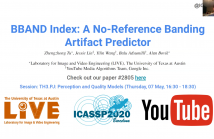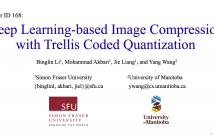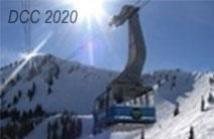
- Read more about Image Restoration via Data-dependent Proximal Averaged Optimization
- Log in to post comments
- Categories:
 20 Views
20 Views
- Read more about COMPRESSIVE ADAPTIVE BILATERAL FILTERING
- Log in to post comments
We propose a fast algorithm for an adaptive variant of the classical bilateral filter, where the range kernel is allowed to vary from pixel to pixel. Several fast and accurate algorithms have been proposed for bilateral filtering, but they assume that the same range kernel is used at each pixel and hence cannot be used for adaptive bilateral filtering (ABF). Only recently, it was shown that fast algorithms for ABF can be developed by approximating the local histogram around each pixel using polynomials.
slides.pdf
- Categories:
 15 Views
15 Views
- Read more about ADRN: Attention-based Deep Residual Network for Hyperspectral Image Denoising
- Log in to post comments
Hyperspectral image (HSI) denoising is of crucial importance for many subsequent applications, such as HSI classification and interpretation. In this paper, we propose an attention-based deep residual network to directly learn a mapping from noisy HSI to the clean one. To jointly utilize the spatial-spectral information, the current band and its K adjacent bands are simultaneously exploited as the input.
- Categories:
 25 Views
25 Views
- Read more about SEQUENTIAL DEEP UNROLLING WITH FLOW PRIORS FOR ROBUST VIDEO DERAINING
- Log in to post comments
Video deraining has attracted wide attention since the urgent
demand of high-quality video in recent years. The indistinct
details and nonideal deraining effects are the most common
defects in existing techniques, whose cause lies in the insufficient
usage of single-frame image and temporal information.
To effectively settle video deraining, we establish a new deraining
model with flow priors to simultaneously introduce
spatial and temporal information for accurately depicting the
enhancement model of the current frame. A sequential deep
ICASSP.pdf
- Categories:
 29 Views
29 Views
- Read more about Residual Attention Network for Wavelet Domain Super-Resolution
- 1 comment
- Log in to post comments
- Categories:
 18 Views
18 Views
- Read more about [Slide] MOGA: Searching Beyond MobileNetV3
- Log in to post comments
- Categories:
 14 Views
14 Views
Banding artifact, or false contouring, is a common video compression impairment that tends to appear on large flat regions in encoded videos. These staircase-shaped color bands can be very noticeable in high-definition videos. Here we study this artifact, and propose a new distortion-specific no-reference video quality model for predicting banding artifacts, called the Blind BANding Detector (BBAND index). BBAND is inspired by human visual models. The proposed detector can generate a pixel-wise banding visibility map and output a banding severity score at both the frame and video levels.
- Categories:
 23 Views
23 Views

- Read more about Deep Learning-based Image Compression with Trellis Coded Quantization
- Log in to post comments
- Categories:
 56 Views
56 Views
- Read more about Wide and Deep Learning for Video Summarization via Attention Mechanism and Independently Recurrent Neural Network
- Log in to post comments
Video summarization considers the problem of selecting a concise set of frames or shots to preserve the most essential contents of the original video. Most of the current approaches apply Recurrent Neural Network (RNN) to learn the interdependencies among the video frames without considering the distinct information of particular frames. Other methods leverage the attention mechanism to explore the characteristics of some certain frames, while ignoring the systematic knowledge across the video sequence.
DCC poster.pdf
- Categories:
 105 Views
105 Views